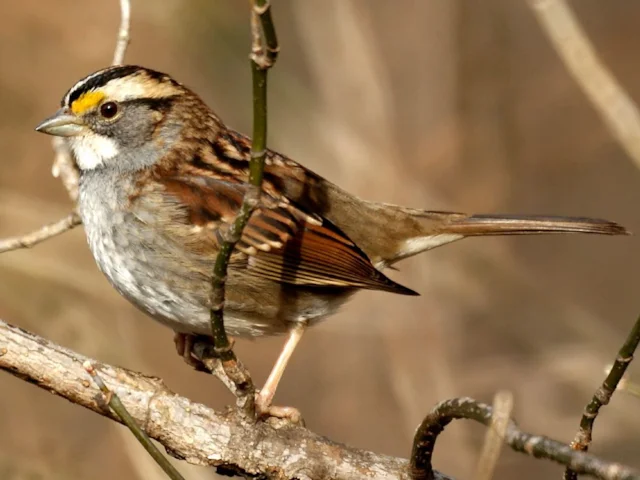Building collisions take toll on birds
c21c805c-e22f-4039-bdd1-c1e29c7c7d1b

A new review of research has estimated that up to 988 million birds are killed every year in building collisions in the United States.
The extrapolations are based on some 92,869 records derived from 23 independent studies, including some unpublished data sets, and show that at least 365 million birds are killed, and perhaps up to 988 million. Curiously, the recorded deaths indicate that low-rise buildings take a greater toll than skyscrapers, with the combination of low office buildings and residences killing 97 per cent of bird corpses recovered.
Wide-ranging though those figures are (this is due to correction for "scavenger removal and imperfect detection" ), they indicate that there is certainly a problem, with collision deaths being second only to the numbers taken by domestic and feral cats among the millions of deaths attribute to the direct or indirect actions of humans. Cats kill between 1.4 and 3.7 billion (that is, up to four times as many) birds every year in North America according to a recent study.
Certain species also seem to be more prone to colliding with buildings than others. The top four most likely to be killed by hitting a man-made structure are White-throated Sparrow, Dark-eyed Junco, Ovenbird and Song Sparrow, all relatively common backyard birds across North America. The researchers say that these species are disproportionately vulnerable to building collisions and that this may be contributing overly to declines in certain populations. Other species more likely than others to hit buildings were Ruby-throated Hummingbird, Brown Creeper, Yellow-bellied Sapsucker, Grey Catbird and Black-and-White Warbler.
Several species of conservation concern due to their declining numbers were also disproportionately represented among the figures: Golden-winged, Canada, Kentucky and Worm-eating Warblers, Wood Thrush and Painted Bunting were all apparently over-sampled in the figures. Wood Thrush was most likely to hit residential buildings, while Worm-eating Warbler collided most frequently with high rises. However, the fact that these species are found mostly in eastern North America where most of the birds were samples, may have skewed the figures a little.
The improved understanding of the sheer number of collisions may help the introduction of preventative measures, the researchers hope. Windows and other transparent structures have been known for some time to be the major cause of such collisions, and can be mitigated for by adding strips and stickers to glass, as well as other techniques like tinting, etching, downward angling of glass, and using shutters and curtains. Such efforts have already improved matters in Minnesota, San Francisco and Oakland, California, and Toronto, Canada.
Reference
Loss, S R, Will, T, Loss, S R, and Marra, P P. 2014. Bird-building collisions in the United States: Estimates of annual mortality and species vulnerability. The Condor 116: 8-23.
The extrapolations are based on some 92,869 records derived from 23 independent studies, including some unpublished data sets, and show that at least 365 million birds are killed, and perhaps up to 988 million. Curiously, the recorded deaths indicate that low-rise buildings take a greater toll than skyscrapers, with the combination of low office buildings and residences killing 97 per cent of bird corpses recovered.
Wide-ranging though those figures are (this is due to correction for "scavenger removal and imperfect detection" ), they indicate that there is certainly a problem, with collision deaths being second only to the numbers taken by domestic and feral cats among the millions of deaths attribute to the direct or indirect actions of humans. Cats kill between 1.4 and 3.7 billion (that is, up to four times as many) birds every year in North America according to a recent study.
Certain species also seem to be more prone to colliding with buildings than others. The top four most likely to be killed by hitting a man-made structure are White-throated Sparrow, Dark-eyed Junco, Ovenbird and Song Sparrow, all relatively common backyard birds across North America. The researchers say that these species are disproportionately vulnerable to building collisions and that this may be contributing overly to declines in certain populations. Other species more likely than others to hit buildings were Ruby-throated Hummingbird, Brown Creeper, Yellow-bellied Sapsucker, Grey Catbird and Black-and-White Warbler.
Several species of conservation concern due to their declining numbers were also disproportionately represented among the figures: Golden-winged, Canada, Kentucky and Worm-eating Warblers, Wood Thrush and Painted Bunting were all apparently over-sampled in the figures. Wood Thrush was most likely to hit residential buildings, while Worm-eating Warbler collided most frequently with high rises. However, the fact that these species are found mostly in eastern North America where most of the birds were samples, may have skewed the figures a little.
The improved understanding of the sheer number of collisions may help the introduction of preventative measures, the researchers hope. Windows and other transparent structures have been known for some time to be the major cause of such collisions, and can be mitigated for by adding strips and stickers to glass, as well as other techniques like tinting, etching, downward angling of glass, and using shutters and curtains. Such efforts have already improved matters in Minnesota, San Francisco and Oakland, California, and Toronto, Canada.
Reference
Loss, S R, Will, T, Loss, S R, and Marra, P P. 2014. Bird-building collisions in the United States: Estimates of annual mortality and species vulnerability. The Condor 116: 8-23.

